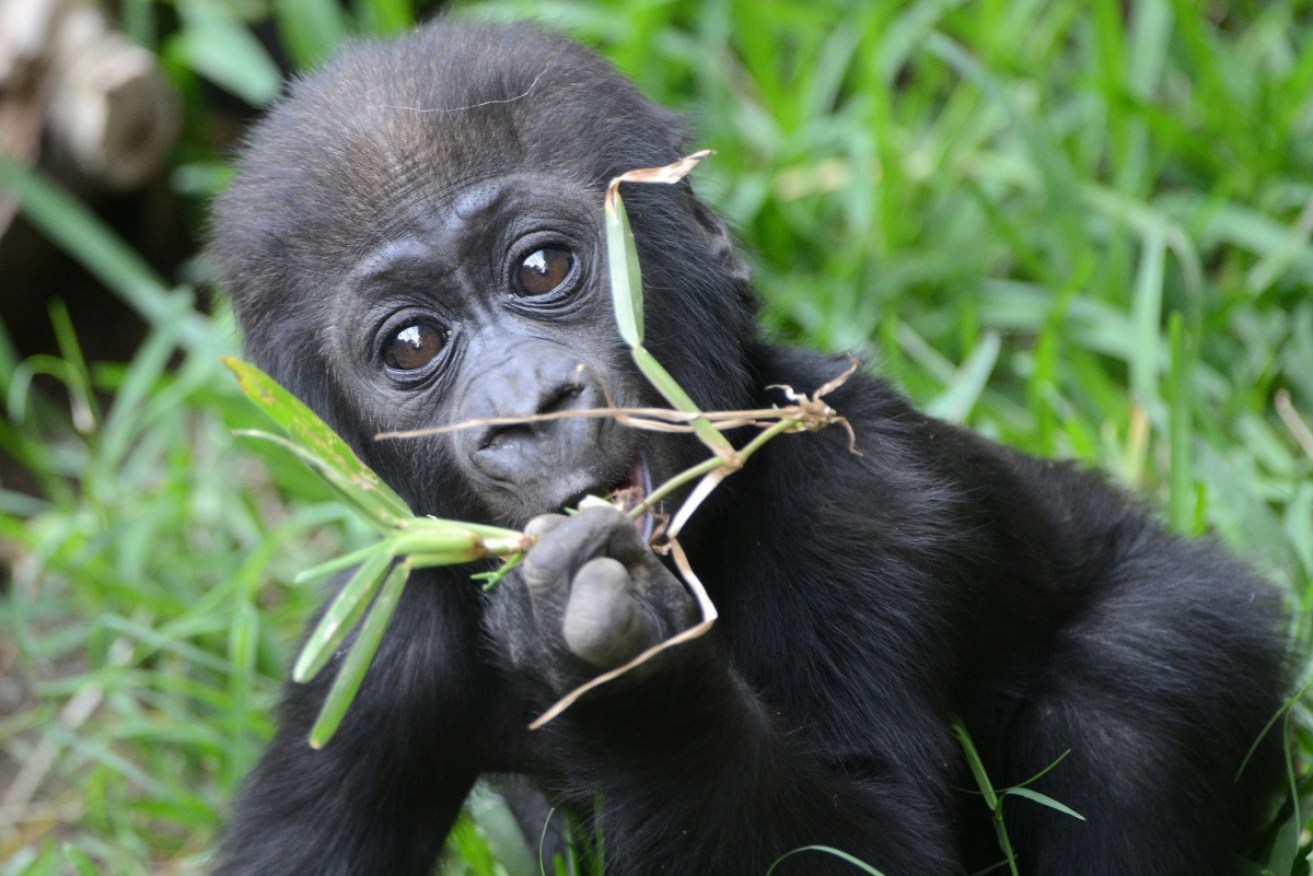World’s largest gorillas ‘one step away from extinction’

War, hunting and loss of land has seen a 70 per cent decline in Eastern gorillas. Photo: Getty
The world’s largest gorillas have been pushed to the brink of extinction by a surge of illegal hunting in the Democratic Republic of Congo, and are now critically endangered.
The eastern gorillas, also known as Gorilla beringei, are the largest great apes in the world.
But with just 5000 left on Earth, they now face the risk of disappearing completely, officials said at the International Union for Conservation of Nature (IUCN) global conference in Honolulu.
Four out of six of the Earth’s great apes are now critically endangered, “only one step away from going extinct,” including the eastern gorilla, western gorilla, Bornean orangutan and Sumatran orangutan, said the IUCN’s latest update to its Red List.
“To see the eastern gorilla — one of our closest cousins — slide towards extinction is truly distressing,” said Inger Andersen, IUCN director general.
Why the a sharp decline?
War, hunting and loss of land to refugees in the past 20 years have led to a “devastating population decline of more than 70 per cent,” for the eastern gorilla, said the IUCN’s update.
Even though killing the apes is against the law, hunting is their greatest threat, experts said.

The world’s largest living primate has been listed as critically endangered. Photo: Getty
According to John Robinson, a primatologist and chief conservation officer at the Wildlife Conservation Society, the Rwandan genocide sparked a disastrous series of events that impacted gorillas, too.
“The genocide pushed a lot of people out of Rwanda, a lot of refugees into eastern DRC, who moved into areas which were relatively unoccupied by human beings,” he said.
“It was a situation that kind of unravelled.”
Some people hunted gorillas for bushmeat, while activities like mining and charcoal production and human settlement also infringed on gorillas’ habitat.
“The people that moved into that part of DRC saw gorillas as a delicacy,” Mr Robinson said.
“It is such a great travesty to be losing our closest relatives on this planet.”
‘Rent-a-panda’ program saves giant pandas

Experts project a population increase of giant pandas resulting from decades of conservation work. Photo: Getty
Decades of conservation work in China have paid off for the giant panda, whose status has been changed from “endangered” to “vulnerable” due to a population rebound.
The latest estimates by the IUCN show a population of 1,864 adult giant pandas. Although exact numbers are not available, adding cubs to the projection would mean about 2,060 pandas exist today, said the IUCN.
“Evidence from a series of range-wide national surveys indicate that the previous population decline has been arrested, and the population has started to increase,” said the IUCN’s updated report.
The cornerstones of the Chinese effort to bring back its fuzzy, black and white national icon have included an intense effort to replant bamboo forests, which provide food and shelter for the bears.
Through its “rent-a-panda” captive breeding program, China has also loaned some bears to zoos abroad in exchange for cash, and re-invested that money in conservation efforts.
However, the IUCN warned the good news for pandas could be short-lived.
A warming planet, driven by fossil fuel burning, is predicted to wipe out more than one third of the panda’s bamboo habitat in the next 80 years.
The IUCN Red List update included 82,954 species — including both plants and animals.
Almost one third — 23,928 — are threatened with extinction.








